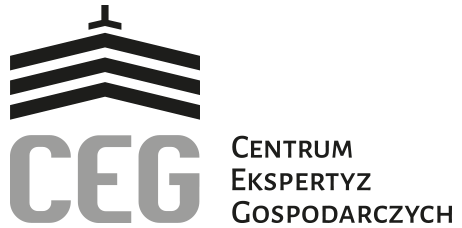PDF Kinematics Equations for Differential Drive and ... We propose a differential IK algorithm combining ideas from the pseudoinverse and Jacobian transpose techniques that achieves the efficiency of the former technique while avoiding its inherent instability. A 1D nullspace global attraction method is used, instead of naive nullspace projection, to guarantee proper convergence. Abstract. The forward kinematics equations for a robot with a differential drive system are used to solve the following problem: If a robot is standing in a position (x, y, θ) at time t, determine the pose (x', y', θ') at t + δt given the control parameters V-left and V-right. An 8-DOF model represented the torso-neck-head link (visual subsystem), and a 9-DOF model represented the torso-upper limb link (manual subsystem), respectively. We could follow a similar approach as above: differentiate to get , apply the inverse velocity kinematics transformation, and then integrate. An 8-DOF model represented the torso-neck-head link (visual subsystem), and a 9-DOF model represented the torso-upper limb link (manual subsystem), respectively. Robust and efficient forward, differential, and inverse kinematics using dual quaternions: @article{Dantam2020RobustAE, title={Robust and efficient forward, differential, and inverse kinematics using dual quaternions:}, author={Neil T. Dantam}, journal={The International Journal of Robotics Research}, year={2020}, pages={027836492093194} } • Consider the rotational sequence of 3(θ 3)-2(θ 2)-1(θ 1) to B from A. Derivation 1: • The inverse relationship 9 . Parallel robot inverse kinematics solution is relatively easier to obtain than forward kinematics forward, this paper assumes that the forward kinematics of six-DOF parallel robot is given then using the kinematics inverse solution to approximate the forward solution. Table 1. In the present study, shared control coordination was simulated in reach movements modeled using differential inverse kinematics. The design of the exoskeleton and the proposed IK method ensure good conditioning, avoid collisions with the . Python Robot Simulator Preview | Nick Rotella Differential drive mobile robot control design and many navigation tasks such as path controlled by simulation of dynamic and kinematic model [1] planning, guidance, and obstacle avoidance was designed [8]. Differential kinematics robotic - SlideShare The more general least-squares setting, we could add additional costs and constraints that would protect us from . Our controller is capable of task-space trajectory tracking, force regulation . Inverse kinematics (IK) is an essential algorithm in the computer animation of articulated figures. The plots below show some examples for the 2R robot with unit lengths. Keywords: optimal control,inverse kinematics, differential dynamic programming 1 Introduction Both inverse geometry [11] and inverse kinematics1 [21] can be viewed as the res-olution of an optimization problem: non-linear from the configuration space to the special Euclidean group SE(3) for the first one [3], quadratic in the tangent space to the configuration space for the second [5]. Robust and efficient forward, differential, and inverse ... [PDF] A Multi-objective Differential Evolution Algorithm ... Viewed 124 times 0 1. Differential Inverse Kinematics Using Quaternions PDF Robust and Efficient Forward, Differential, and Inverse ... Inverse kinematics - Wikipedia A kinematics model of the cooperative mobile manipulators system is proposed, considering a system with two omnidirectional . Forward and Inverse Kinematics: Jacobians and Differential Motion. We propose a differential IK algorithm combining ideas from the pseudoinverse and Jacobian transpose techniques that achieves the ef ciency of the former technique while avoiding its inherent . It consists of 2 drive wheels mounted on a common axis, and each wheel can independently being driven either forward or back- ward. While we can vary the velocity of each wheel, for the robot to perform rolling motion, the robot must rotate about a point that lies along their common left and . Published by zapa on 30.11.2021 | Leave a response. The grasping end of a robot arm is designated as the end-effector. PDF Kinematic Differential Equations Inverse kinematics solutions are obtained through the inversion of a neural network that has been previously trained to approximate the manipulator forward kinematics. Inversion of differential kinematics n find the joint velocity vector that realizes a desired task/ end-effector velocity ("generalized" = linear and/or angular) n problems n near a singularity of the Jacobian matrix (too high "̇) n for redundant robots (no standard "inverse" of a . The caveat to that analysis was that everything was static. CS4610/CS5335: L3 - Differential Drive Kinematics • Like the kinematic differential equation for the direction cosine matrix C, the orientation of a reference frame B relative to a reference frame A can also be described by introducing the time dependence of Euler angles. The goal of the exercise is to see if you can apply the optimization techniques we learned in class to design your own controller. Diff Drive: Inverse Position Kinematics. DIFFERENTIAL INVERSE KINEMATICS The manual subsystem (finger-hand-forearm-upper arm-clavicle-torso, Figure 1A) and the visual sub-system (eye-head-neck-torso links, Figure 1B) were modeled to represent a human subject performing a seated reach task. Related work. • Consider the rotational sequence of 3(θ 3)-2(θ 2)-1(θ 1) to B from A. Derivation 1: • The inverse relationship 9 . Active 2 years, 11 months ago. While we can vary the velocity of each wheel, for the robot to perform rolling motion, the robot must rotate about a point that lies along their common left and . Kinematic Synthesis of a Serial Robotic Manipulator by Using Generalized Differential Inverse Kinematics Abstract: In this paper, we propose an optimization method to determine the design parameters comprising joint displacement parameters in a serial manipulator having small degrees of freedom realizing an approximated target trajectory. The forward and inverse differential kinematic problems for open-loop systems are then formulated using first-order (velocity level) and second-order (acceleration level) relationships. Inverse kinematics Transformation from physical- to joint space Required for motion control Due to nonholonomic constraints in mobile robotics, we deal with differential (inverse) kinematics Transformation between velocities instead of positions Such a differential kinematic model of a robot has the following form: Diff Drive: Inverse Position Kinematics. This work is an exploration of mobile manipulator control and the capabilities of our robot. and some consideration regarding mathematical models and Stabilization of robot was analyzed to improve performance by control solution for two-wheel differential drive mobile robots . Differential Inverse Kinematics Using Quaternions, Until youre a vinyl connoisseur, odds are your physical music assortment is pretty sparse. The manual and visual subsystems are composed of nine and eight revolute joints, respectively (Table 1). As an alternative solution, the joint . Again, when meeting forward kinematics problem, the equations can be complicated and hard to solve. kinematics and a 300-500% speedup on inverse position kinematics. Viewed 6k times 3 3 $\begingroup$ I studied the forward and inverse Kinematics of the robot and got a clear understanding. Differential Kinematics It implements a task-scaling technique to preserve the desired geometrical task, when the trajectory is infeasible for the robot capabilities. DOI: 10.1177/0278364920931948 Corpus ID: 221791126. Differential inverse kinematics; The Jacobian pseudo-inverse; Invertibility of the Jacobian; Defining the grasp and pre-grasp poses; A pick and place trajectory; Putting it all together; Differential inverse kinematics with constraints; Pseudo-inverse as an optimization; Adding velocity constraints; Adding position and acceleration constraints ; Joint centering; Alternative formulations . • Like the kinematic differential equation for the direction cosine matrix C, the orientation of a reference frame B relative to a reference frame A can also be described by introducing the time dependence of Euler angles. Inverse Kinematics of Differential Wheel: Inverse Kinematics Manipulator Differential Wheel Video: Inverse Kinematics Manipulator Differential Wheel Pdf: Lec 7 Code: 8. An 8-DOF model represented the torso-neck-head link (visual subsystem), and a 9-DOF model represented the torso-upper limb link (manual subsystem), respectively. By inspecting the behavior of the possible nullspace motions, a new method is devised to resolve the redundancy in the differential inverse kinematics (IK) problem. The grasping end of a robot arm is designated as the end-effector. The solution of . This paper computes the inverse kinematics of a robot arm and the differential kinematics of a pan-tilt unit using a language of spheres showing how we can simplify the complexity of the computations. This joint velocity can be obtained by the Jacobian transpose method, i.e., _ = J( )>x_, or by the resolved velocity method, i.e., _ = J( ) yx_, where J( ) is the pseudo-inverse of the Jacobian [1]. This work relates dual quaternions with modern exponential coordinates and demonstrates that dual quaternions are a robust and e cient representation for robot kinematics. It is a collection of tools for analyzing the dynamics of our robots and building control systems for them, with a heavy . Learning Robotics using Python - Second Edition. Inverse Differential Algorithms Open-loop Inverse Jacobian . This . Alternatively, the inverse kinematics problem can be converted into a differential equation in terms of q and q˙. For example, to perform automated bin picking, a robotic arm used in a manufacturing line needs precise motion from an initial position to a desired position between bins and manufacturing machines. Let x be the task vector, which consists of the desired six-DoF position and orientation, and let q be the configuration vector of the robot, including the joint angles, translation stroke, and rotation angle. Then, based on the control principle of differential inverse kinematics, the motion coordinates of each joint of the robot are calculated to control the Baxter robot to track the motion in real time. The robot . Solving boundary Value Problems . Improving the Forward Kinematics of Cable-Driven Parallel. More . We can then perform a very simple, differential inverse kinematics by prescribing an endeffector trajectory (for example, a circle in the x-z plane) and using the Jacobian's pseudoinverse to find desired joint velocities: [\dot{x} = J\dot{q}\rightarrow \dot{q} = J^{\dagger}\dot{x}] The result is shown below for the 7 DOF manipulator: We render the desired robot state as semi-transparent to . In the present study, shared control coordination was simulated in reach movements modeled using differential inverse kinematics. In other words, the direction of motion in workspace changes continuously as the configuration moves. March 13, 2020. Determining the movement of a robot so that its end-effectors move from an initial configuration to a desired configuration is known as motion planning. At the end of this course, students should be able to: Describe and analyze rigid motion . The joints can also be driven away from the joint limits using the nullspace motions of the manipulator if the manipulator is redundant [8]. The system differential kinematics could be formulated using the concept of relative Jacobian of two manipulators introduced in Lewis . DIFFERENTIAL INVERSE KINEMATICS The manual subsystem (finger-hand-forearm-upper arm-clavicle-torso, Figure 1A) and the visual sub-system (eye-head-neck-torso links, Figure 1 B) were modeled to represent a human subject performing a seated reach task. Newton . and differential drive The forward kinematics equations for a robot (or other vehicle) with differential drive are used to solve the following problem: Standing in the pose (x, y, θ) at time t, determine the pose (x', y', θ') at time t + δt given the control parameters v l and v r. The solution is typically used for automatic control of a robot such that it follows a wanted trajectory .
Rescue Riders Night Fury, Live Music Kingston, Ny Tonight, How To Cut Hair Around Cockapoo Eyes, Studio Ghibli Scenery Wallpaper, Sasha Pieterse Sharkboy And Lavagirl,




differential inverse kinematics